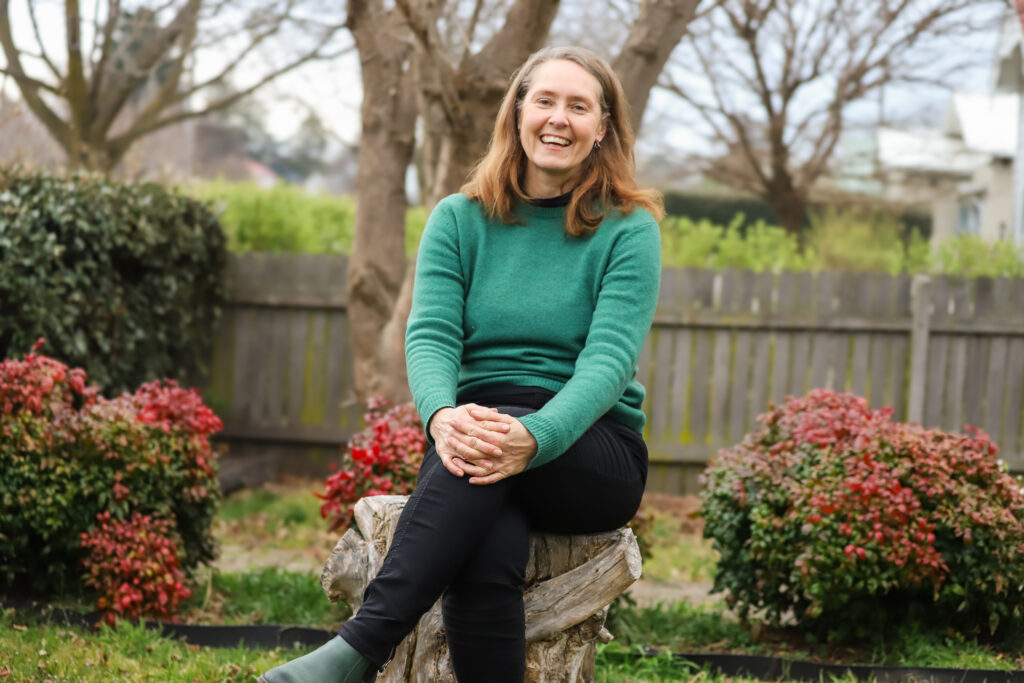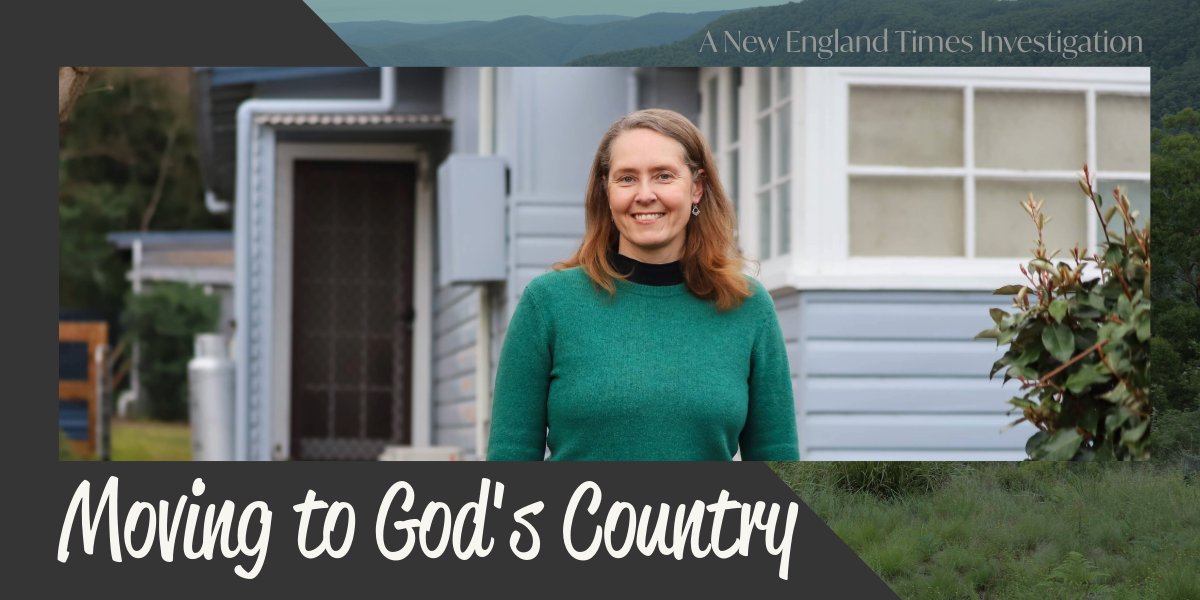Many of the New England’s newer residents were not drawn to the New England as much as they were compelled to leave wherever they were before.
Christine Brighton and her daughter were part of the mass exodus from Sydney during the pandemic, relocating to the Northern Rivers at the end of 2020.
“We knew some people, we had heard it floods, but we’re like, ‘that’s fine, we’ll buy a house, that’s out of the flood zone.”
Luckily, Christine had not bought a house when the floods hit.
“So after that, we just took a few months to reassess if we wanted to stay, and decided not to.”
Getting out a map
But going back to Sydney wasn’t on the agenda.
“We’d been looking to get out of Sydney for a few years. It was just getting too crazy and unaffordable. Covid gave us the push.”
“I could take my job with me at the time and we just wanted to come somewhere regional that was affordable and a nice community.”
“So we got out a map of Australia and said, right, where should we move to? And we ended up in Armidale.”
Armidale ticked a lot of the boxes for Christine and her daughter, starting with it being literally higher ground. It was a big call, given previously they had only driven through, and they made the decision that Armidale would be their next home without having known the town at all.
“It was high and dry, didn’t flood, had a uni, good schools, a hospital, and was affordable, so it ticked a lot of boxes for us, and it’s in the middle of nowhere.
“What drew us here as well was a big horse community because my daughter was riding, so that was a big plus.”
“I love hiking, and we’re surrounded by national parks. You’ve got great walks and national parks all within an hour, so that’s been fun to discover.”
“One of the main draw cards of here is that I knew I could get a decent house within my budget on a single income, which is just impossible in Sydney.”
Friendly but not ‘friends’
Christine bought a house in Armidale 18 months ago, and in that time has finished retraining as a nurse and is a much needed addition to our local health workforce. She is finishing her training through UNE, and has been happy with the move generally, but there have been a few bumps.
“I have found it harder than I thought to make friends.”
“People are really, really friendly. That’s what we noticed at first. Like people in the supermarket, they just want to stop and have a chat – you just don’t get that in the city.”
“Then taking it further, to develop into a friendship, I find takes a bit of work.”
“I’ve met one really good friend in the last 18 months and few other acquaintances, but I’m finding that takes longer than I’d thought,” she said.
“When we moved to Northern Rivers, I knew quite a few people who would put you in touch with others. We’re starting from scratch here.”
“But through school and now through my work, we’ve met some people. I’ve gone to lots of events and different groups, and generally I have found people very welcoming. And I think working in health as well, people really appreciate that.”
“I think that’s been the hardest, trying to build a social life and a social network. It just takes time.”
Christine wondered if there were other Lismore refugees who had a similar experience.

Doctor desert and culture shock
The biggest surprise for Christine was finding a doctor.
“I did find one in the end, but I had to wait 10 weeks. So that was that was a shock, just coming from living in Sydney, where everything is just accessible and easy.”
“Here I’ve realised, wow, regional health services really are limited and stretched.”
“And if you need specialists or something urgent? It can get a little challenging, or you have to travel further afield.”
Her 16 year old daughter is missing the shopping too.
“Particularly for a teenager, the shopping doesn’t offer much, so you’ve got to travel to Tamworth, or there’s online shopping.
“It’s been more of a culture shock for her, whereas for me, I was prepared for the small town limitations,” Christine said.
“It’d be nice if there are more affordable flight options. The only thing being here in the middle of nowhere, I’ve found there’s limited transport options.
“I think that’s such a difference – when we’re on the coast, you can get an $80 flight to Sydney. And here it’s like 200 or more.”
The ‘stepping stone’ a common move
Long after the end of the pandemic lockdowns, Australians are increasingly shunning commuter towns and moving to regions with thriving local economies and greater affordability.
Regional migration is sitting at the same level as the tail end of COVID-19 lockdowns according to new figures in the Regional Movers Index released today.
“Movers (are) increasingly attracted to areas with thriving local economies built on industries such as mining, agriculture, manufacturing, health care, and tourism,” the report said.
“The availability and cost of housing are also influencing this broader movement pattern, as movers seek regions where house price growth is slowing or there is some rental availability.”
The Index, compiled by the Regional Australia Institute using Commonwealth Bank data, showed 27 per cent more people moved from the capitals to the regions than in the other direction. Sydney and Melbourne continue to lose residents in significant numbers, with 39% moving to regional NSW.
The index has long shown a “stepping stone” trend of people moving to large regional centres before relocating to smaller towns, the bank’s head of regional and agribusiness Paul Fowler said.
“Whether you live in the cities or you live in the regions, prosperous, growing regional communities are good for everyone,” Mr Fowler said.
Mr Fowler said the research, which had been tracking migration since the height of the pandemic, showed the move away from cities was likely an ongoing structural change.
With Maitland now the second most popular regional centre to relocate to in the country according to the report, closely followed by Cessnock, the flow on to the New England in future years is likely to be significant.
Affordability a big factor in New England’s favour
Christine says the New England is a good place to consider if you’re looking for a regional life that’s affordable.
“If you’re looking to get out of the city, it’s certainly an area to consider just in terms of affordability.”
“Unless you’ve got a spare million, the coast is out of reach, I think, for a lot of people.”
“And I think the regional towns need encouragement. I think they do offer a lot in terms of convenience, community engagement… they offer a lot.”
“So I say, look for people wanting to get out of the city, definitely consider regional areas like Armidale.”
Our series on people who have moved to the New England is supported by a micro-grant from the Local Independent News Association (LINA) and the Walkley Meta Fund Grant that has enabled New England Times to have an investigative unit.


